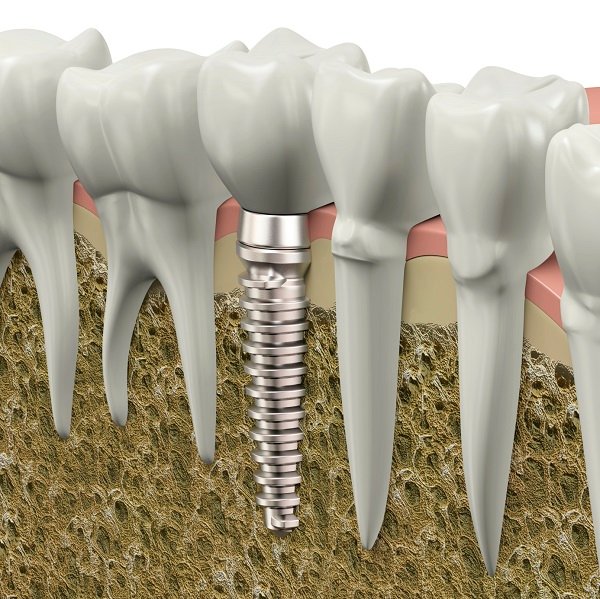Why the Implant Surface Matters for Dental Implants
June 26, 2019
As an implant professional, you’ve likely considered many aspects of your implants when choosing the best systems for your patients — such as size, design, material and the manufacturer’s reputation. But have you ever considered the surface of the implants you use?
Different surface modifications can play a significant role in your procedure’s success, but many dental professionals overlook this feature. Learn more about the importance of an implant’s surface, the best surface topographies and the most common surface treatment methods used to improve the implant surface.
Why Does Dental Implant Surface Treatment Matter?
You may have never thought about the role your dental implants’ surface plays in your procedures’ success, but many studies have proven that dental implant surface treatments are a critical aspect in the success of any implant treatment. Some of the factors influenced by surface topography include:
- Healing time: Rougher implant surfaces may contribute to shorter healing times, allowing patients to return to their regular eating and drinking habits more quickly without the risk of implant failure.
- Osseointegration success: An implant’s roughness also correlates with the speed and success of osseointegration — the fusion of the implant with the living bone. A rougher surface ensures more bone resorption than smooth implant surfaces.
- Long-term survival: The better an implant can osseointegrate, the longer its survival rate. In one study, more than 95 percent of implants with anodically oxidized surfaces survived at least 10 years.
The Best Implant Surface Topography for a Successful Implant Procedure
Experts have long considered pure titanium and titanium alloys the best materials for dental implants. However, the material’s success rate varies based on the surface’s roughness. Particularly, research shows that rougher surfaces are better able to integrate with patients’ bone and allow for osseointegration. Porous implant surfaces distribute stress more evenly around the implant by imitating the natural tooth’s shock-absorbing qualities.
Implant surface roughness is typically divided into three levels based on the measured surface features’ dimensions:
- Macroscopic: Macro-surface roughness is composed of implant features that range from millimeters to tens of microns. This scale specifically relates to an implant’s geometry with macroporous surface treatments. Macro-surface features can improve the implant’s stability by enhancing the interlocking characteristics between the implant’s surface and the surrounding bone.
- Microscopic: An implant’s microtopographic profile has a surface roughness between one and 10 micrometers. Micro-surface roughness allows for better bone-to-implant contact than smooth titanium surfaces by maximizing the interlocking abilities between them. This level of surface topography may result in greater bone accrual at the surface of the implant.
- Nanoscopic: Nanoscale topographies are composed of nano-sized features that range from one to 100 nanometers. This roughness allows for better protein absorption, which provides better osseointegration.
But while the implant itself functions best when its surface is moderately roughened, the implant’s abutment performs better as a smooth surface. A smoother abutment surface correlates to less plaque accumulation, which leads to reduced tooth decay. Thus, both smooth and rough surfaces play a role in your implant’s ongoing success.
What Are the Different Types of Surface Modifications and Their Importance?
Manufacturers can produce implant surface irregularities using two methods — additive or subtractive procedures. Additive methods add extra materials to roughen the implant’s surface, while subtractive processes remove parts of the implant’s surface. Both have been shown to increase osseointegration, as they both create small irregularities in the implant.
Various additive and subtractive surface treatment methods are available with differing rates of success. Some of the most popular include:
- Machined: The first osseointegrated implants had a smooth machined surface. These minimally rough surfaces have fallen out of popularity due to the development of rough surfaces, which implant with faster and more sturdy osseointegration.
- Sandblasted: Blasting the implant’s surface with small particles of various sizes and shapes is called sandblasting. Research has found this process to be far more effective at creating long-term bone-to-implant contact than machined surfaces.
- Acid etched: Some implants are soaked in acid, which eats away some of the grains of the implant’s surface. This method also promises significantly higher contact between the bone and implant than machined surfaces, according to animal-based studies.
- Anodized: Anodizing is an electrochemical process that increases the thickness of the implant’s titanium oxide surface layer, which is the stabilizing formation that occurs when the implant’s titanium reacts with oxygen. Thus, anodized surfaces have one of the highest long-term survival rates of the various surface treatment methods.
Choosing the Best Surface Topography for Your Implants
The surface modifications you choose for your patients’ implants are an important consideration. While there’s no single “right” answer as to which implant surface is best, it’s essential to choose a system that has studies backing up its surfaces’ effectiveness and safety.
Hiossen® Implant is a leading dental implant system manufacturer with products backed by significant research and years of expertise. We’re proud to create implant solutions that are safe and innovative while remaining highly affordable. Contact us to learn more about our products and their surface characteristics.
